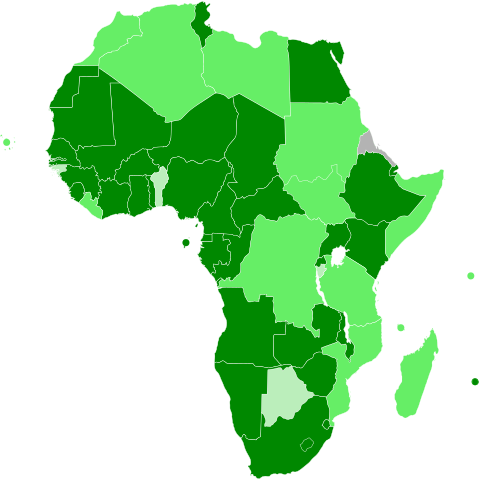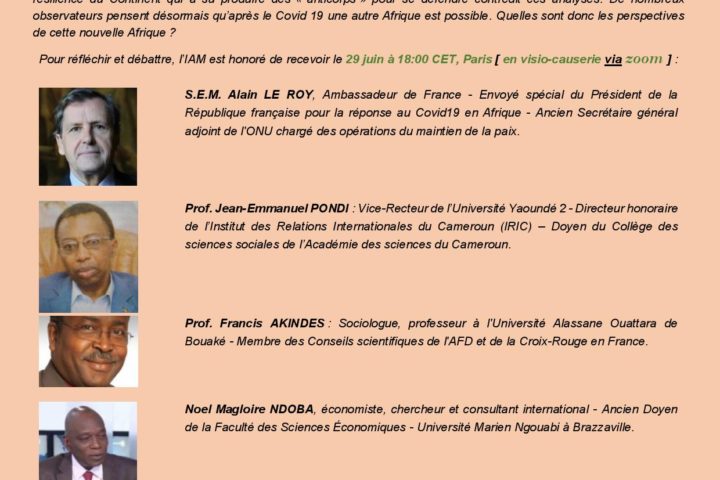
Mathurin DOUMBE EPEE
Chairman of the Board of Directors of Société Générale Cameroon
I read with great interest the article by my friend Manga KUOH whose service allows for an informed opinion on the FTAA. I largely share his opinion on various points developed on the economic dimension of the FTAA, while being more reserved in front of the heaviness of the task and its complexity.
The creation of the FTAA is a rational, necessary and useful projection for the future of Africa. It thus follows in the footsteps of all the Chanters of Pan-Africanism who have never stopped repeating the same antiphon after KWAME NKUMAH: “Africa must unite”. In the 21st century, a time of all dangers, this objective becomes an ardent obligation for current and future generations: it is irreversible! But what challenges to be met!
In spite of the legitimate enthusiasm of the beginnings of the Great Achievements, it is a task of an incredible complexity which will require “a long time”, as my friend Manga recognizes it, because of the multiplicity of stages to be crossed so that the ZLECAF becomes operational, even before approaching the Customs Union, another mountain to be climbed …. This is not to say that we should back down, but rather that we should be aware of this modern-day “obstacle course.
Between the Status Quo Option and the FTAA Option, the choice is quickly made: the second one wins by a wide margin. Indeed, with a market of 1.3 billion people, this option would increase inter-African trade by 15% to 25% by 2040, since business flows have so far been South-North oriented. Moreover, current trade is essentially based on an African economy of trade, and therefore without significant added value. According to some experts, the impact of this new deal on GDP, in the order of 3% to 6%, could significantly improve the well-being of populations and give a new dimension to Africa and its economy.
Consequently, the economic stakes of the FTAA option are worthwhile, because they cannot be ignored.
But how can it be achieved?
- By reducing tariffs between member countries
- By reducing non-tariff barriers (NTBs)
- By introducing trade facilitation measures ” MFE “
- By prioritizing the industrialization of Africa.
Reducing customs duties
This would significantly increase the level of trade between member countries. However, some fear that this reduction would have a recessionary effect on budgetary revenues, depriving several countries of the resources they need to stay afloat. Others, such as Kuoh, believe that the cut will be short-lived, with increased export volumes expected to make up the shortfall over time (which could be years) and generate much greater resources. For the time being, no reliable study has been able to validate this approach, as countries are different from one another and manufactured products, as well as goods and services, may be of a different nature. However, if this were to be the case, consideration should be given to possible compensation measures to better link countries in difficulty to the FTAA.
The reduction of customs duties must also be accompanied by particular vigilance regarding the origin of imports. Indeed, since the Free Trade Area, unlike the Customs Union, does not provide for a common external tariff, an imported good may benefit from a preferential tariff from a member country with reduced customs duties, and thus be re-exported to other FTAA countries with the words “Made in Africa”, which will obviously give rise to unfair competition that is detrimental to the Area. The same applies to semi-finished products imported by a country with preferential customs duties. These products may undergo varying degrees of local processing and be re-exported into the Zone with the same label: “Made in Africa”. Admittedly, the adoption of the Rules of Origin, set out in Annex II of the Agreement, makes it possible to deal with this problem by defining the relevant criteria. But it is still the case that control, verification and sanction measures should accompany this Agreement to dissuade any attempt to circumvent it.
The reduction of non-tariff barriers is just as delicate, because they vary from country to country. Only harmonization at the continental level can remedy this. But how can it be applied and enforced in each of the 55 countries? In other words, what means does the FTAA have to ensure that this harmonization is respected?
According to Mr. Kuoh, and rightly so, the success of the FTAA will be measured by its ability to promote the industrialization of African economies, in order to add value to their raw materials and thus make available to the continent’s consumers “Made in Africa” products, at reduced costs, due to economies of scale, thus reducing imports from third countries. To this end, and according to the theory of comparative advantage, each country will specialize in what it does best, thus generating a division of labor on a continental scale, a source of unit cost reductions.
But how can this division of labor be achieved on a continental scale? How to move these goods from one country to another on the Continent? Will the quantity and quality of the products manufactured be sufficient to allow them to be substituted for imported products, as the African consumer becomes increasingly demanding?
Prerequisites will therefore be necessary in terms of transport infrastructure (road, rail, sea, even air), professional training, but also sufficient energy supply to avoid the frequent wave of power cuts. To these prerequisites must be added the mastery of NICTs to facilitate transactions. For the time being, the 55 countries are obviously not on the same wavelength, and an upgrade will therefore be essential.
When you talk about the economy, you also talk about financing.
What are the means available to the FTAA to meet its continental objectives? This is a vast subject that we will have to address sooner or later. Any structure worthy of the name must give itself the means to achieve its ambitions.
Finally, by setting a course for 2065, the African Union has taken the full measure of the road ahead and the challenges to be met at the institutional, political, economic, social, financial and good governance levels. It is also aware that regional armed conflicts linked to political or even religious uncertainties, accompanied by insecurity and population exodus in many areas, are aggravating factors that are detrimental to the development of the FTAA.
Pragmatism should therefore prevail over a certain angelism that often distances us from our realities and hampers our most noble actions.
Consequently, the debates have only just begun….




